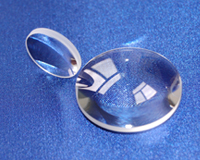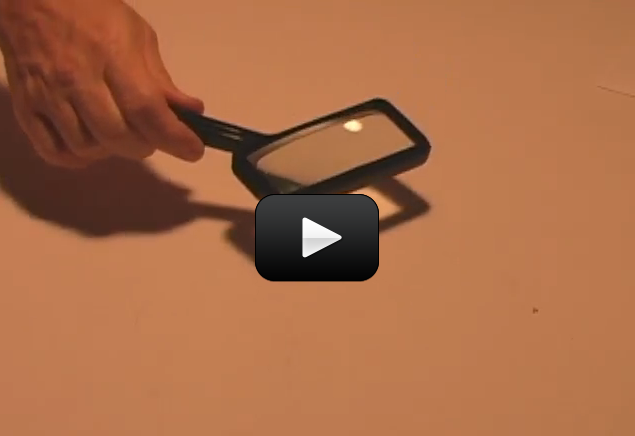 The curved shape of the magnifying lens causes light rays to bend and focus on an image. When we look through the lens, we can use it to make writing or some other object appear larger. However, the magnifying lens can also be used to make something smaller. The light from the bulb is bent and focused on the wall when the lens is held far from the lamp and close to the wall. The image is much brighter than the surroundings. This is because all the light falling on the surface of the lens is concentrated into a much smaller area.
The curved shape of the magnifying lens causes light rays to bend and focus on an image. When we look through the lens, we can use it to make writing or some other object appear larger. However, the magnifying lens can also be used to make something smaller. The light from the bulb is bent and focused on the wall when the lens is held far from the lamp and close to the wall. The image is much brighter than the surroundings. This is because all the light falling on the surface of the lens is concentrated into a much smaller area.
When sunlight is concentrated by passing it through a lens, the result can be an intensely bright and not spot of light. Even a small magnifying glass can increase the intensity of the sun enough to set wood and paper on fire. We are using a light bulb rather than sunlight for this experiment because concentrated sunlight Can be very harmful to your eyes. NEVER LOOK AT A CONCENTRATED IMAGE OF THE SUN.
The United States Department of Energy’s National Renewable Energy Laboratory in Colorado uses solar energy to operate a special furnace. This high-temperature solar furnace uses a lens to concentrate sunlight. A heliostat (a device used to track the motion of the sun across the sky) is used so that the image reflected from a mirror is always directed at the same spot. The lens is used to concentrate sunlight from a mirror to an area about the size of a penny. This concentrated sunlight has the energy of 20,000 suns shining in one spot.
In less than half a second, the temperature can be raised to 1,720° C (3,128° F) which is hot enough to melt sand. This high-temperature solar furnace is being used to harden steel and to make ceramic materials that must be heated to extremely high temperatures.
Concentrated sunlight also has been used to purify polluted ground water. The ultraviolet radiation in sunlight can break down organic pollutants into carbon dioxide, water, and harmless chlorine ions. This procedure has been successfully carried out at the Lawrence Livermore Laboratory in California. In the laboratory, up to 100,000 gallons of contaminated water could be treated in one day.
Please login or register to read the rest of this content.


No, any kind of magnifying glass should work.
do you need a certain kind of magnifying glass?
cool!